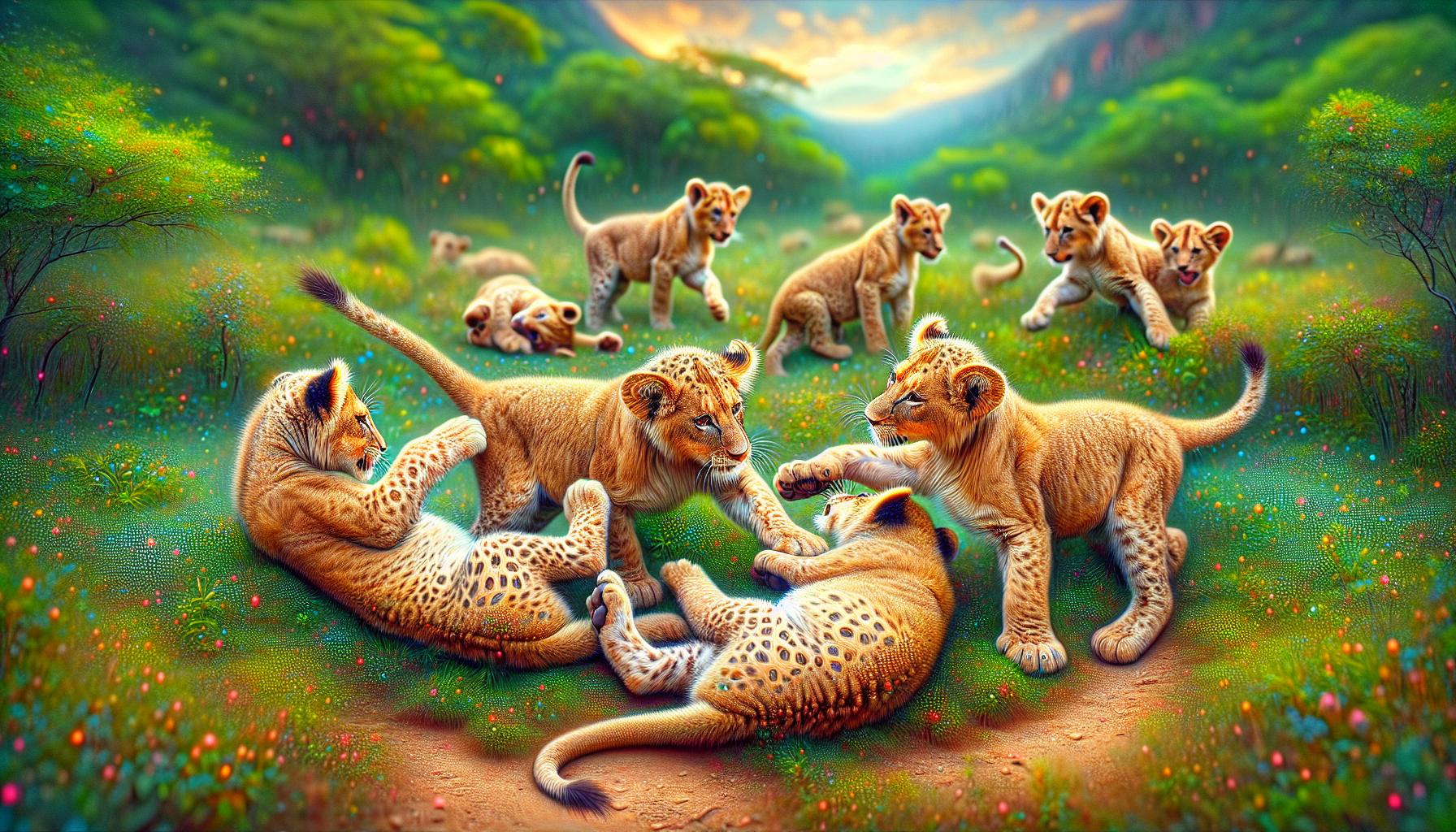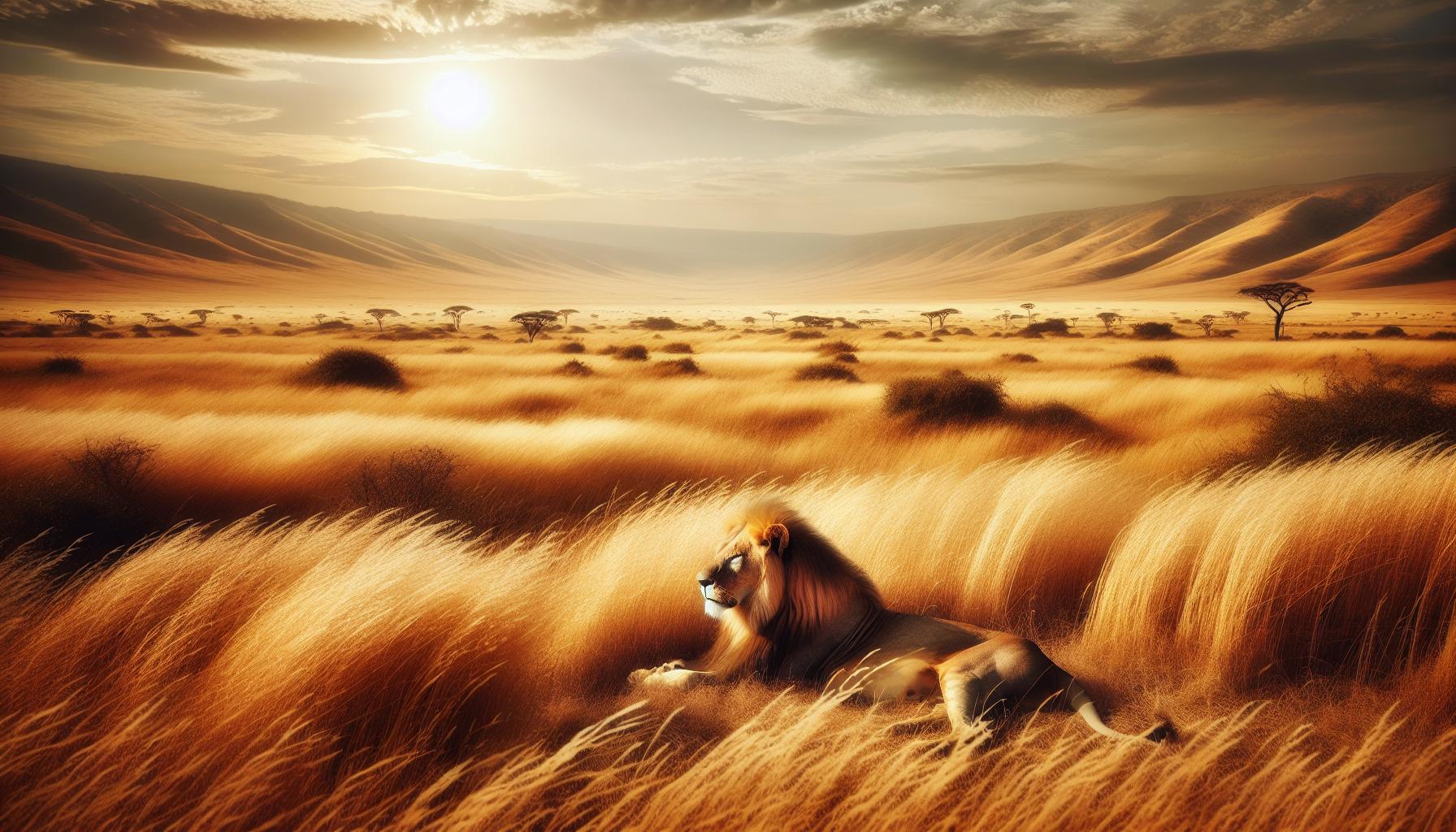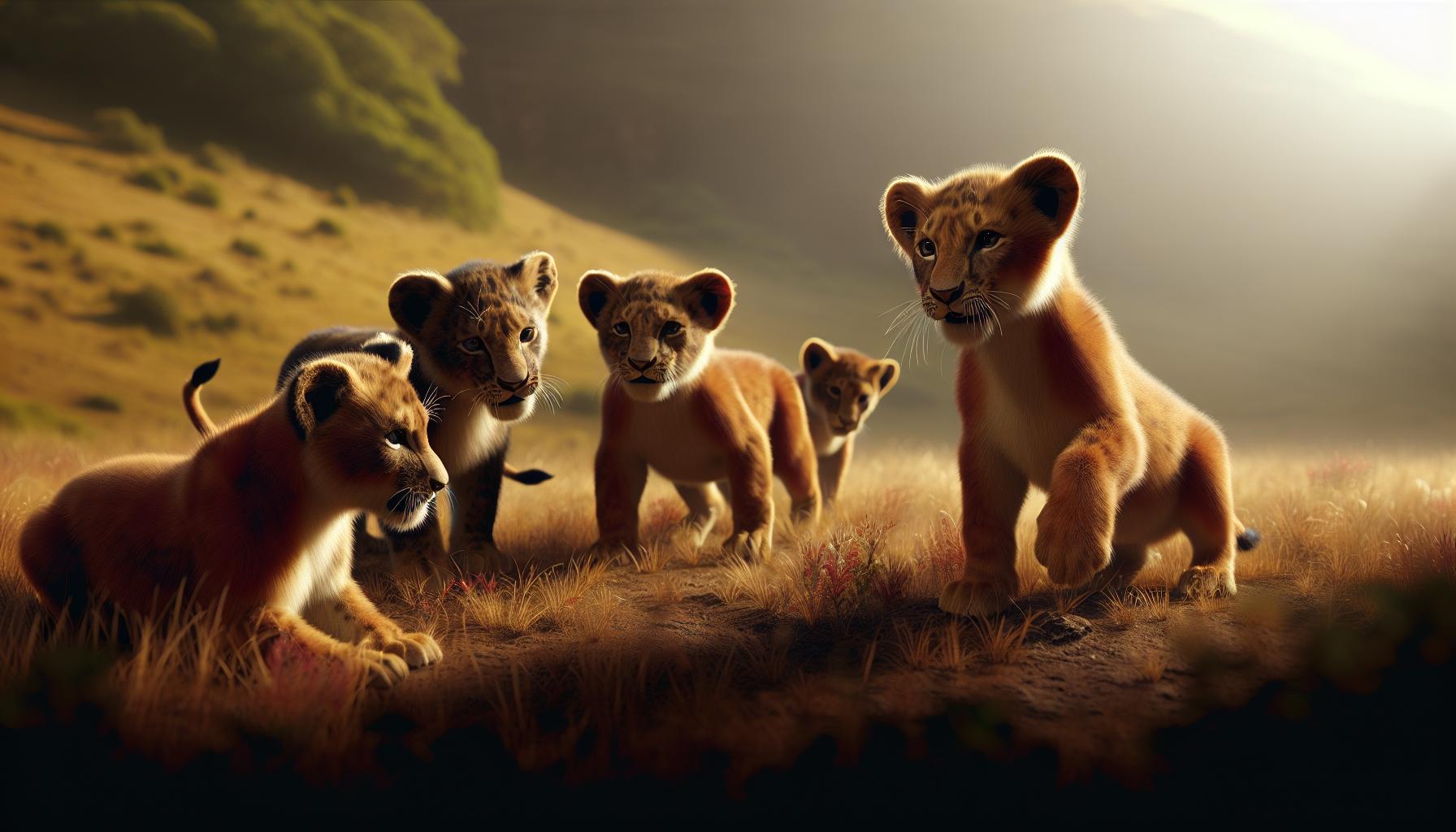Lions have always fascinated me, especially their role as symbols of strength and majesty in the animal kingdom. But when I stumbled upon the concept of “baby:4erindnul2o= lions,” I found an intriguing blend of curiosity and wonder. These young lions, often overlooked, are essential to understanding the dynamics of their pride and the challenges they face in the wild.
As I dive deeper into the world of these cubs, I can’t help but marvel at their playful antics and the lessons they teach us about survival and family bonds. Join me as I explore the unique characteristics of baby lions, their development, and the vital role they play in the ecosystem. You might just discover a newfound appreciation for these magnificent creatures.
- Critical Role in the Pride: Baby lions, or cubs, are essential for understanding social dynamics and survival strategies within their pride for up to two years.
- Unique Characteristics: At birth, lion cubs weigh 2 to 4 pounds, feature distinct spots for camouflage, and undergo significant physical and behavioral development as they grow.
- Play and Learning: Engaging in play-fighting and mimicking adult behaviors helps cubs acquire vital hunting skills and social interaction necessary for adulthood.
- Ecosystem Impact: As future apex predators, baby lions help maintain ecological balance by controlling prey populations and fostering social structures critical for hunting.
- Conservation Importance: With lion populations declining by over 40% in recent years, the survival of cubs is essential for the overall health and stability of their ecosystems.
Baby:4erindnul2o= Lions
Baby:4erindnul2o= lions, also known as lion cubs, display unique characteristics that intrigue many. Weighing about 2 to 4 pounds at birth, these cubs remain dependent on their mother for nourishment and protection. Initially, their eyes remain closed for about a week, making them vulnerable during this period.
Lion cubs are born with spots, which fade as they mature. This camouflage assists them in blending into their surroundings, providing essential protection from predators. Their playful nature emerges rapidly, and playtime fosters critical skills like hunting and social interaction within the pride.
Cubs typically stay with their mothers for up to two years. During this time, they learn vital survival skills and understand their role within the social structure of the pride. Observing these interactions offers insight into family dynamics and behavior among wild lions.
In the wild, the mortality rate of lion cubs can exceed 50%, primarily due to competition for resources and predation. Understanding these risks highlights the challenges they face and emphasizes the importance of conservation efforts to ensure their survival and the protection of their habitat.
Characteristics of Baby:4erindnul2o= Lions

Baby:4erindnul2o= lions exhibit unique physical and behavioral traits that are essential for their growth and survival within the pride.
Physical Traits
Baby:4erindnul2o= lions, or lion cubs, weigh between 2 to 4 pounds at birth. Their bodies are covered in a soft, tawny fur with distinct spots that provide camouflage. These spots gradually fade as they mature, enhancing their appearance as they blend into the environment. Their eyes remain closed for the first week, and once opened, they display a striking blue hue that changes to amber as they grow. Cubs possess slightly larger paws relative to their body, which aids them in balance and coordination, essential for future hunting skills.
Behavioral Traits
Baby:4erindnul2o= lions showcase playful and curious behaviors, which are vital for their development. They spend considerable time engaging in play-fighting, practicing techniques that prepare them for adulthood. Cubs often mimic adult behaviors, learning to stalk, pounce, and interact socially. Bonding with their siblings and other pride members enhances their social skills, crucial for navigating the complex dynamics of lion society. Additionally, they vocalize through mews and growls, communicating with their mothers and siblings. This early socialization reinforces familial bonds and fosters their integration into the pride.
Habitat and Range

Lions inhabit a diverse range of ecosystems, primarily found in sub-Saharan Africa and a small population in India. Their habitats include grasslands, savannas, dense bush, and open woodlands.
Natural Habitat
Lions thrive in areas with abundant prey and cover for stalking. Open grasslands and savannas provide the perfect environment for hunting. Woodlands offer shade and shelter during hot weather. The availability of water also influences their habitat selection. Lions typically avoid dense forest regions where visibility is limited, hindering their hunting strategies. They adapt effectively to changes in habitat, showcasing their resilience and strong survival instincts.
Conservation Status
Lions face significant threats, leading to a decline in their populations. Habitat loss, poaching, and human-wildlife conflict contribute to the decreasing numbers. Current estimates suggest that lion populations have plummeted by over 40% in the last two decades, with fewer than 23,000 remaining in the wild. Various conservation organizations work diligently to protect lion habitats and implement management strategies. Preserving their ecosystems is critical for ensuring the survival of both lions and other species within their range.
Importance of Baby:4erindnul2o= Lions in Ecosystem

Baby:4erindnul2o= lions, or lion cubs, play a vital role in their ecosystem. As future top predators, they help maintain the balance of prey populations in their habitat. By controlling herbivore numbers, they prevent overgrazing, which can lead to habitat degradation. Moreover, their interactions within the pride foster social structures crucial for successful hunting.
Cubs engage in play, which enhances their physical development and social cohesion. These playful activities prepare them for adult life, allowing them to learn vital hunting skills and coordinate as a group later. Strong social bonds formed during these early interactions increase hunting efficiency, which benefits the entire pride.
The presence of lion cubs indicates a stable lion population, crucial for biodiversity. Their survival contributes to the overall health of the ecosystem, allowing various species to thrive. As apex predators, lions impact other species’ behavior and distribution, promoting ecological balance.
With the decline of lion populations, the loss of baby:4erindnul2o= lions disrupts these ecological dynamics. A decrease in top predators can lead to an overabundance of herbivores, resulting in habitat damage. This shift highlights the need for focused conservation efforts to protect lion cubs and their habitats, ensuring ecological integrity and resilience.
The journey of baby lions is more than just a tale of survival; it’s a story of resilience and the intricate dynamics of nature. Watching these playful cubs grow into powerful predators fills me with hope for the future of lions in the wild. Their role in maintaining ecological balance can’t be overstated.
As I reflect on their challenges and the urgent need for conservation, I realize that protecting these magnificent creatures is vital for our planet’s health. Every effort made to safeguard their habitat contributes to the survival of not just lions but the entire ecosystem they inhabit. Let’s cherish and advocate for the future of these incredible animals, ensuring that their legacy continues for generations to come.

